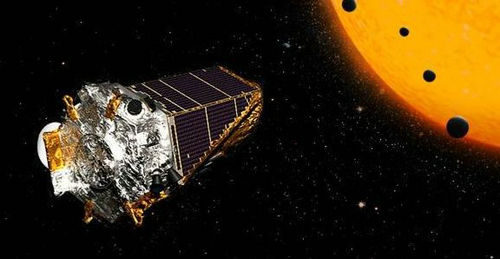LAMOST-Kepler/K2 Survey announced the first light result
An international team led by Prof. Jian-Ning Fu and Dr. Weikai Zong, from Beijing Normal University, published the first light result of medium-resolution spectroscopic observations, which is undertaken by the LAMOST-Kepler/K2 Survey. This result demonstrates that the medium-resolution spectrographs, equipped on LAMOST, perform to the designed expectation. The article is published this November online in The Astrophysical Journal Supplement Series.

Fig.1. Kepler telescope (Credit: NASA)
The LAMOST-Kepler/K2 Survey was launched based on the success of the LAMOST-Kepler project, a low-resolution spectroscopic survey that consecutive performed since 2011. Different from LAMOST-Kepler project, the LAMOST-Kepler/K2 Survey aims to collect time-series spectroscopies with medium-resolution on about 55,000 stars distributed on Kepler and K2 campaigns, with higher priority given to the targets with available Kepler photometry. Each of those input targets will be visited about 60 times during the period from September 2018 to June 2023. This project is allocated with one sixth of the entire time within the LAMOST medium-resolution observations.
From May 2018 to June 2019, a total of thirteen LAMOST-Kepler/K2 Survey footprints have been visited by LAMOST, and obtained about 370,000 high-quality spectra of 28,000 stars. The internal uncertainties for the effective temperature, surface gravity, metallicity and radial velocity are 80 K,0.08 dex, 0.05 dex and 1km/s when the signal to noise ratio equals to 20, respectively, which suggests that the performance of LAMOST medium-resolution spectrographs meet the designed expectation. The external comparisons with GAIA and APOGEE show that LAMOST stellar atmospheric parameters have a good linear relationship, which indicates the quality of LAMOST medium-resolution spectra is reliable.

Fig.2. The LAMOST-Kepler/K2 Survey targets distributed on the Kepler and K2 campaigns (Credit: Weikai Zong)
The LAMOST-Kepler/K2 Survey is the first project dedicated to obtaining time series of spectra by using the LAMOST medium-resolution spectrographs, pointing towards the Kepler/K2 fields. These spectra will be very important for many scientific goals, including the discovery of new binaries or even the brown dwarfs, the study of oscillation dynamics for large-amplitude pulsators and the investigation of the variability of stellar activity.
This paper can be accessed at https://ui.adsabs.harvard.edu/abs/2020ApJS..251...15Z/abstract